Gravity Forms is one of the most powerful and popular form plugins for WordPress. However, finding good resources online to perfectly track Gravity Form submissions with form input data using Google Tag Manager can be challenging. To address this, I’ve crafted a comprehensive GTM dataLayer code specifically designed to track Gravity Form submissions via Google Tag Manager. What makes this code great is its ability to capture all form input values. Additionally, the code has undergone extensive testing, ensuring that GTM won’t fire unless all valid information is provided in the form before submission.
In the following tutorial, I’ve provided a step-by-step guide to tracking Gravity Forms using this helpful code.
Gravity Form DataLayer Code
(function() {
var form = document.querySelector('form[id^="gform_"]');
var submitButton = form.querySelector('form[id^="gform_"] input[type="submit"]');
if(form && submitButton) {
submitButton.addEventListener('pointerdown', function() {
var formId = form.getAttribute('data-formid');
var isAjaxForm = form.getAttribute('target') === ('gform_ajax_frame_' + formId);
var formData = new FormData(form);
var gformData = {formId: formId};
var errorRequired = false;
formData.forEach(function (value, key) {
if(key) {
var inputField = form.querySelector('[name="'+key+'"]');
if(inputField && inputField.offsetParent) {
var isRequiredField = inputField.getAttribute('aria-required') === 'true';
if(isRequiredField) {
if(inputField.tagName === 'SELECT') {
var selectedOptionVal = inputField.options[inputField.selectedIndex].text;
if(!selectedOptionVal) {
errorRequired = true;
}
}else if((inputField.getAttribute('type') === 'email') && (!value || !value.includes('@'))) {
errorRequired = true;
}
else if(!value) {
errorRequired = true;
}
}
}
var formattedKey = key.replace('.', '_');
gformData[formattedKey] = value;
}
});
var requiredCheckboxesRadio = form.querySelectorAll('.gfield--type-checkbox.gfield_contains_required, .gfield--type-radio.gfield_contains_required');
requiredCheckboxesRadio.forEach(function(fieldSet) {
if(fieldSet.querySelector('input[type="radio"]') || fieldSet.querySelector('input[type="checkbox"]')) {
if(!fieldSet.querySelector('input:checked')) {
errorRequired = true;
}
}
});
if(!errorRequired) {
window.dataLayer = window.dataLayer || [];
delete gformData['formId'];
delete gformData['state_1'];
delete gformData['version_hash'];
dataLayer.push({event: 'gravity_form_submit', formId: formId, inputs: gformData});
}
});
}
})();Create a tag first
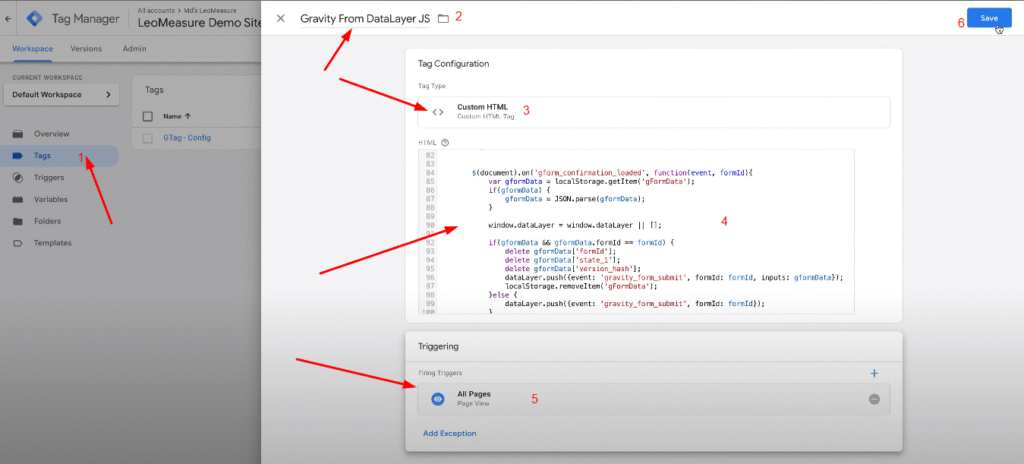

Submit your Gravity form


Send formation to Google Analytics
Create a variable for form id


another variable for industry
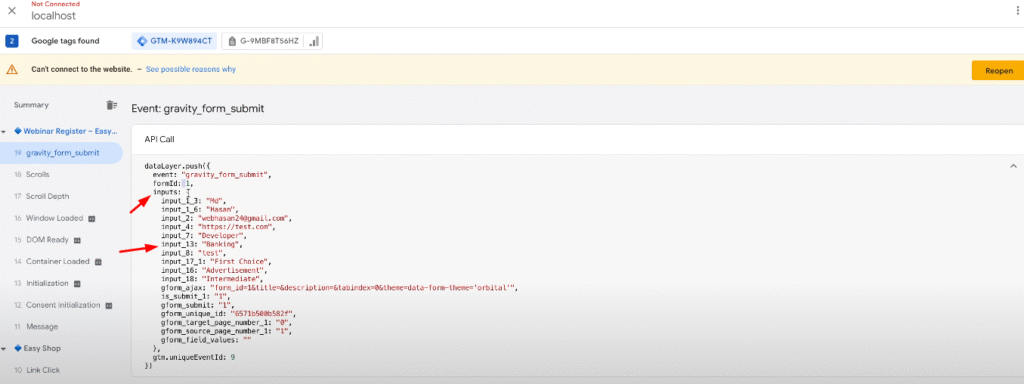

Another variable for source of customer

Now, create a trigger

Create a new tag
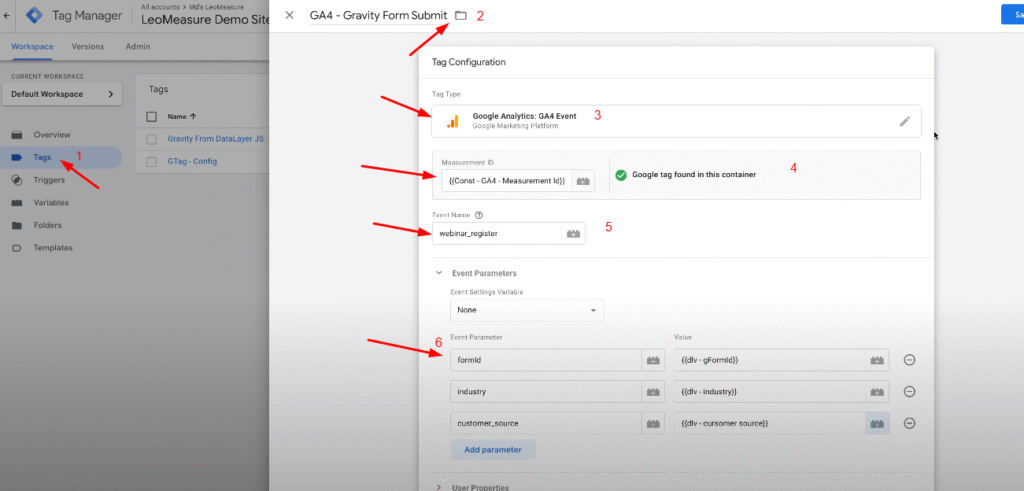
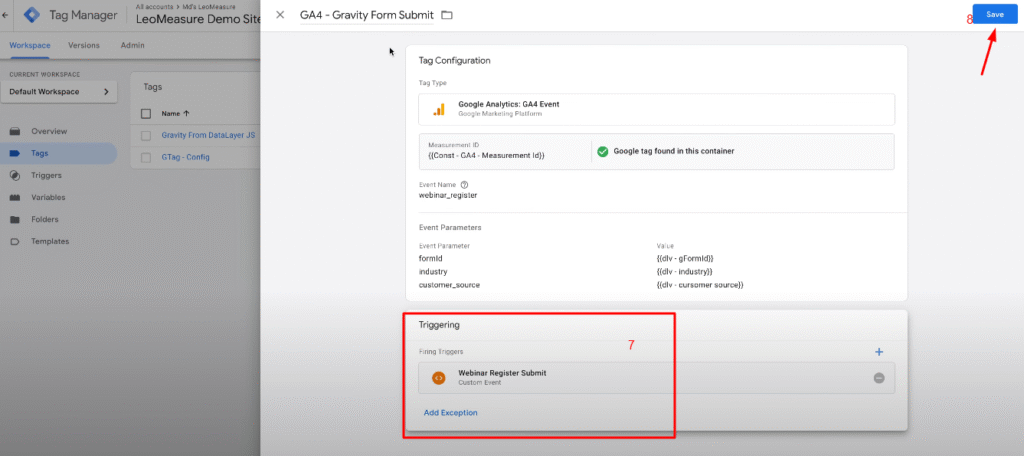
Preview it

Fill the form and submit again

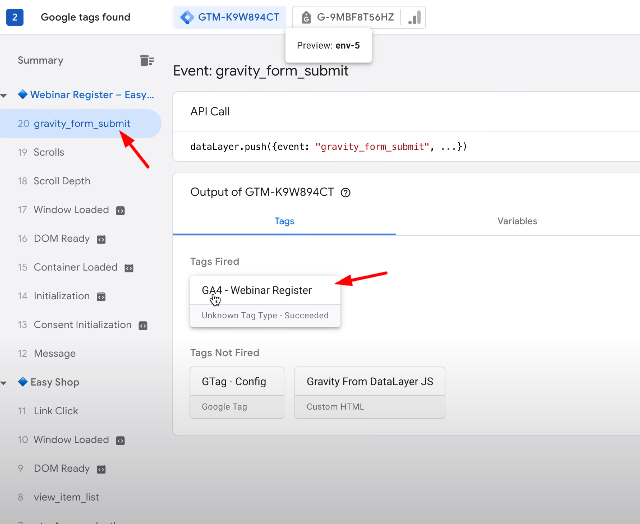
For further inspection go to google analytics debug view
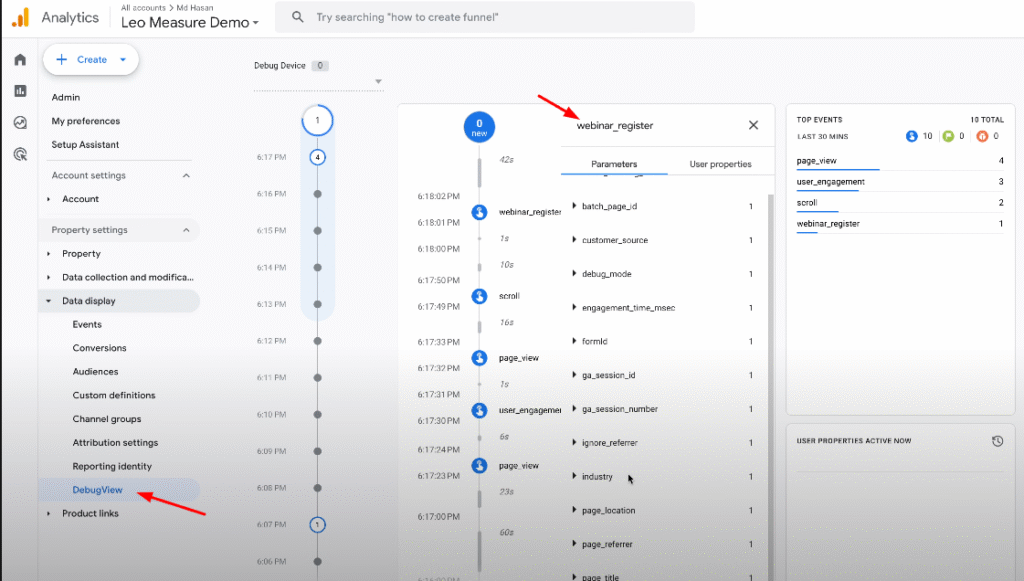
Everything is fine. So, submit it now.

Thanks for the script! Works great on regular forms, even if there are several pages. But I have a problem with it not working when i have conditional logic enabled. I would love to have a script that can handle advanced forms with conditional logic as well.
Hi Jannica,
We need to know further details to solve it. Please share details on info@leomeasure.com